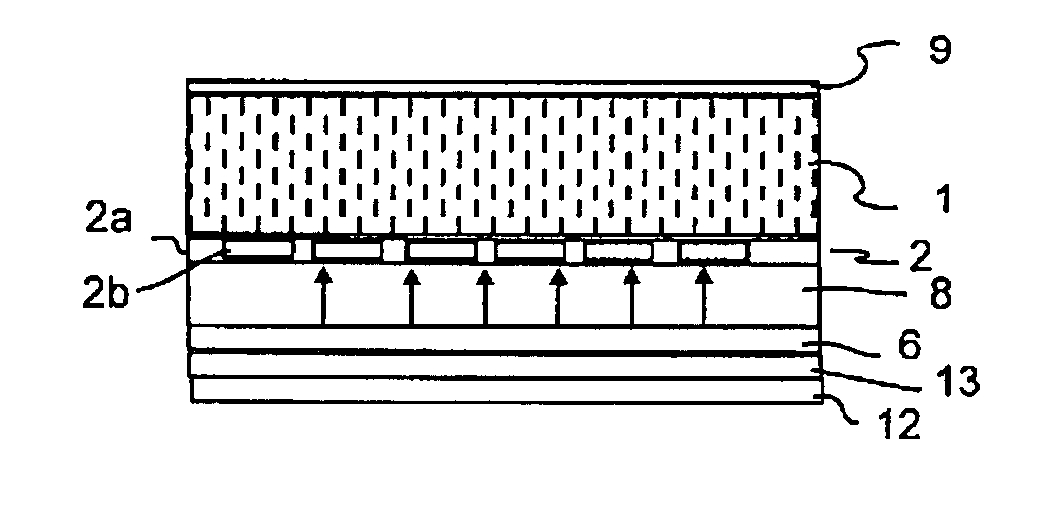Flat dynamic radiation detector
a dynamic radiation and detector technology, applied in the field of radiometers, can solve the problems of adverse effects on successive image exposure, slow decay behavior of the photosensor arrangement or the second converter layer, and detrimental decay behavior, etc., to enhance the stability of dark images, increase the sensitivity of the first converter layer, and ensure the effect of stability
- Summary
- Abstract
- Description
- Claims
- Application Information
AI Technical Summary
Benefits of technology
Problems solved by technology
Method used
Image
Examples
Embodiment Construction
[0036]FIG. 1 shows the construction of a radiation detector in conformity with the state of the art. The converter arrangement 16 thereof is formed essentially by a first converter layer 1 and a second converter layer 2. The converter layer 1 is connected, via an adhesive layer 11, to the glass plate 2a with the photosensor arrangement 2b provided thereon in the thin-film technique, for example, by amorphous silicon technology 11. Above the converter layer 1 there is provided a reflection layer 9 which reflects upwards reflected light back in the direction of the photosensor arrangement. The glass support 4 carries the glass plate 2a with the photosensor arrangement 2b provided thereon and the converter layer 1 arranged thereabove. Underneath the glass support 4 there is formed a layer of air 5 of a thickness of approximately 10 mm. The illumination device 6 with light-emitting diodes (LEDs) 7 is provided underneath said layer of air 5. The incident X-rays 15 pass the reflection lay...
PUM
 Login to View More
Login to View More Abstract
Description
Claims
Application Information
 Login to View More
Login to View More - R&D
- Intellectual Property
- Life Sciences
- Materials
- Tech Scout
- Unparalleled Data Quality
- Higher Quality Content
- 60% Fewer Hallucinations
Browse by: Latest US Patents, China's latest patents, Technical Efficacy Thesaurus, Application Domain, Technology Topic, Popular Technical Reports.
© 2025 PatSnap. All rights reserved.Legal|Privacy policy|Modern Slavery Act Transparency Statement|Sitemap|About US| Contact US: help@patsnap.com


